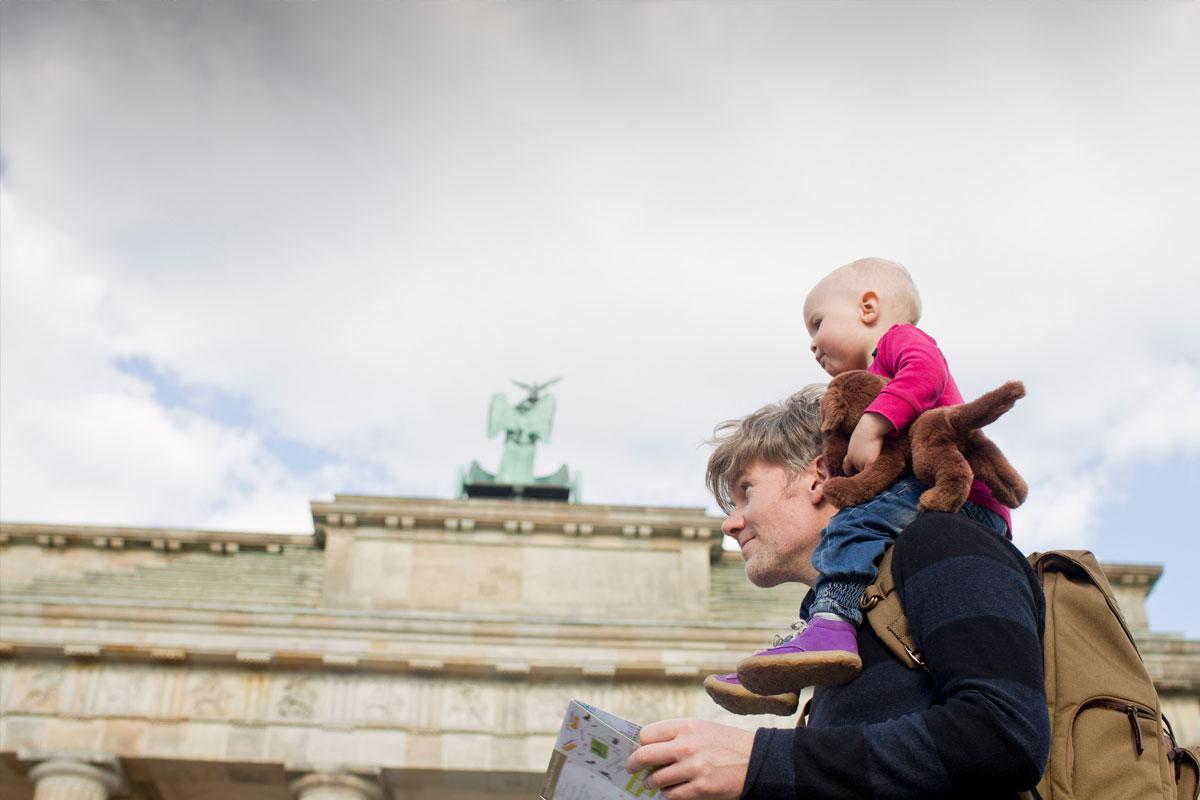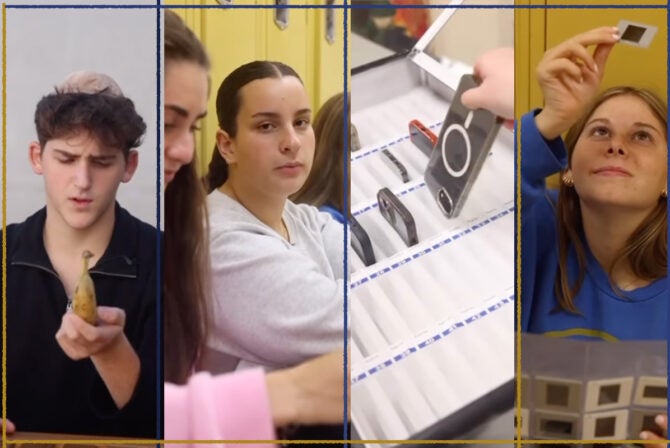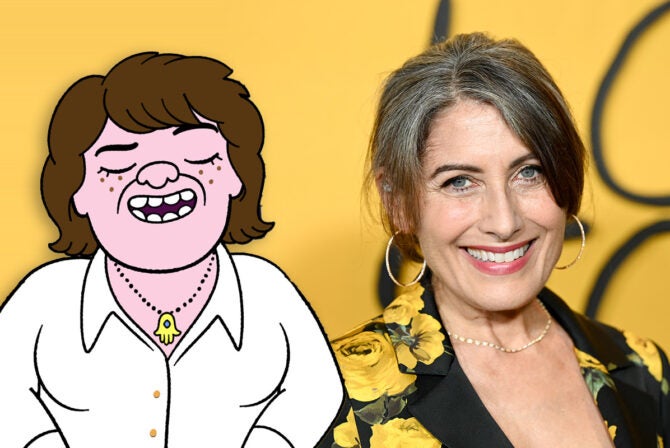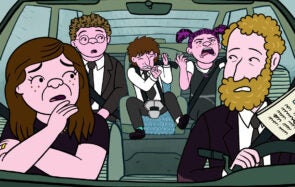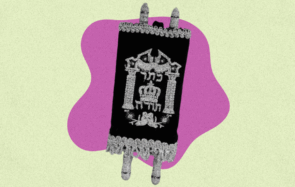I was apprehensive about visiting Germany given my family history: My Jewish grandparents escaped the Holocaust in Austria, and I recently obtained dual citizenship as the descendent of victims of Nazi persecution. But a recent press trip ended up being a really meaningful, and ultimately positive, experience.
It made me think about what it would be like to visit the city with kids to teach them about Jewish history and the Holocaust. While it’s a difficult and complex topic that can be hard to explain to children, having physical monuments to point to and exhibits curated for kids can help. Germany has made great strides to atone for the sins of World War II, and Berlin is chock-full of memorials and educational information.
On my trip, World War II came up often, and I ended up talking about my family history a lot. So think beforehand about what you’re comfortable disclosing. Make sure you factor in time to process the emotions that may come up, and make time for lighter activities.
Here are nine places to share Jewish history with your kids in Berlin, organized by area.
Hackescher Markt area
Once on the outskirts of the city – now in the central Mitte district – Hackescher Markt is Berlin’s old Jewish quarter. In the 17th century, when the area was outside the city, it was full of barns used for storing hay and straw. It’s still called the Scheunenviertel (Barn Quarter) today. People began settling there, so in 1731, Prussian king Friedrich Wilhelm I extended the city walls to include the area. Jewish residents began to settle there and built a vibrant community. By 1930, there were almost 300 Jewish institutions.
- New Synagogue. The synagogue was built in 1866 and was the main place of worship for Berlin’s Jewish community. On November 9, 1938, when synagogues all over Germany were burned down by the Nazis, the head of the local police precinct called the fire brigade to save the synagogue, saying it was a historically listed building. The building was preserved because a non-Jewish man intervened – a great lesson for kids about the importance of standing up for what’s right. Even if you just walk by to look at the magnificent gilded dome, it’s worth a stop.
- Anne Frank Center. Anne Frank was just 16 years old when she died in a concentration camp. She had spent two years hiding in a secret annex. The diary she kept was published after her death and helped many understand the horrors perpetrated by the Nazis. Her tragic story will be relatable to kids because of how young she was. At the Anne Frank Center, there are video interviews kids can watch, tactile objects, and places for them to write letters; as well as information about her life.
- Museum Otto Weidt’s Workshop for the Blind. Another opportunity to teach your children about the importance of standing up for what is right and the stories of real people who went through persecution – and stood up to the Nazis. Otto Weidt was a factory owner who risked his life to employ and protect blind and deaf Jews. At the Otto Weidt museum, you can see the small, windowless room where Weidt’s workers hid, photographs of them, and letters they wrote.
Food and other activities
- Once the kids are museum-ed out, take them to nearby Hackescher Hof, a complex of eight courtyards with art nouveau facades that were extensively restored after the war. Within the 27,000 square meters there are 40 businesses that include shops, cultural institutions, a cinema, and plenty of cafes.
- It’s a short walk to several parks: James Simon Park and the larger Monbijoupark, with a basketball court, table tennis, and open swimming pool.
- Don’t miss the street art at Haus Schwarzenberg. From Rosenthaler Strasse, take your kids through an unassuming archway into this colorful courtyard where nearly every available surface is covered in street art, including some made for the blind.
The Jewish Museum
If there’s one place in Berlin to learn about Jewish history in Germany, this is it. The Jewish Museum is absolutely worth a stop, and it’s got something for kids of every age. It opened in 2001 and has since had over 10 million visitors.
- ANOHA Children’s World of the Jewish Museum. If your kids are between the ages of 3 and 10, be sure to spend some time in this part of the Jewish Museum. Children helped advise and co-create it right from the start. There’s a huge wooden ark kids can climb on, 150 unique animal sculptures they can play with, stations where they can craft and construct things, as well as workshops and guided tours. The museum aims to get children thinking about the respectful coexistence of people, animals and nature, and to protect and honor diversity. Entrance is free.
- Jewish Museum. If your kids are over 10 years old, the main Jewish Museum has profound exhibits and stunning architecture. After closing for a year and a half of reconstruction, the museum opened a new core exhibition in August 2020, which spans 3,500 years of Jewish life in Germany: from the Middle Ages to the present. The core exhibit is free. Temporary exhibits cost 3-8 Euros; those under 18 years old get in free.
Food and other activities
- The cafe in the Jewish Museum has traditional Jewish and Israeli food, as well as more global dishes (but only kosher snacks).
- You’ll be a 15 minute bus ride from Hausvogteiplatz. If your kids are into fashion, there is a memorial there of three mirrors facing the sky for the 4,000 Jews who were forced out of the textile industry.
Mitte is the most central borough of Berlin. It includes the city’s historic core and most important tourist sites. It was one of only two boroughs that was formerly divided between East Berlin and West Berlin along the Berlin Wall.
- Memorial to the Murdered Jews of Europe. This memorial is sure to leave an impact on your family. It consists of 2,711 concrete slabs of different heights, which represent the 6 million European Jews who perished in the Holocaust. There’s also an underground information center with photographs, diaries and film. Just walking through the slabs above ground leads to somber reflection. Kids also like to run through the memorial and play hide-and-seek. While some find this disrespectful, the designer, Peter Eisenman, imagined the memorial as a place for life to happen, and for children to run through the pillars and touch the stones.
- Trains to Life – Trains to Death. This almost-life-size work memorializes the children of the 1930s. It was created by sculptor Frank Meisler, who himself escaped on the Kindertransporte funded by London stockbroker Nicholas Winton that saved around 10,000 Jewish children. Nearly 2 million children died between 1933 and 1945 because of Nazi persecution. The sculpture offers a good opportunity to talk about what the Holocaust was like for children.
- Memorial to Moses Mendelssohn. Mendelssohn was a German Jewish philosopher who translated the Torah into German; he died in 1786. This subtle monument on the ground is situated near the Town Hall. The dark stones show the house Mendelssohn wanted to buy – but Jews in Berlin could not own property. It can help kids understand that not everyone had the same rights.
- Bebelplatz. This memorial at Humboldt University marks where 20,000 books were burned by Nazi students. On the square, you’ll see a small window in the ground. Kids can peer through to see empty bookshelves with space for the 20,000 books burned. They’ll be able to see how much space 20,000 books take up, and imagine how much knowledge was lost by burning them.
Food and other activities
- Stop for some food near the beautiful Gendarmenmarkt square, perhaps at Hugo & Notte, which serves modern, French-inspired cuisine in a relaxed setting.
- You’ll be close to Brandenburg Gate, so be sure to snag a family photo.
- If the family is in need of some air conditioning, the Berlin Global exhibit at the Humboldt Forum is interactive and fun for kids who can read. Visitors determine their own path through the exhibit by answering questions along the way – and get to wear a special wrist watch. The exhibit covers many themes: revolution, free space, boundaries, entertainment, war, fashion and interconnection. It includes information on Jewish history in Berlin, plus a silent disco dance party.
- For younger kids, take a stop in the Town Hall to see the lego replica on the second floor.
- No trip to Berlin is complete without a visit to the infamous TV Tower – an iconic symbol of the city. Teenagers will enjoy the virtual reality 15-minute Berlin Odyssey exhibit on the ground floor, which offers a great introduction to the history of the city. Then take the 40-second elevator ride up for stunning views from the highest point of the city.
Tips for Eating with Kids in Berlin
- Many places have an English menu – just ask! Restaurants are pretty accommodating to kids, though you’ll want to keep them occupied and on the quieter side if possible; dining culture in Germany tends to be quiet and polite.
- Bier (beer) gardens are a great place to take kids – they’re outdoors, so the kids can be a bit louder and run around. Some even have playgrounds.
- Quick, go-to foods for kids in Berlin include bratwurst; pretzels and cheese; currywurst, which is bratwurst seasoned with curry ketchup (not spicy!); käse spätzle – think of this as a heavy macaroni and cheese made with egg noodles; and döner kebabs – Berlin has a large Turkish population. For dessert, try kaiserschmarrn – like a deep-fried pancake.
- If you’re feeling ambitious, head to Kanaan, a vegan-vegetarian restaurant started by an Israeli entrepreneur and a Palestinian Arab restaraunteur. The restaurant strives to be a welcoming and safe place for all genders, sexualities and races. They employ refugees from the Middle East and Africa. A great place to show your kids tolerance and inclusiveness in action.
More Berlin Travel Tips
- Look down! You’ll find stolpersteine, or stumbling stones, everywhere; there are over 8,000 in Berlin. Each block pays tribute to one individual persecuted by the Nazis. The stolpersteine are the largest decentralized memorial in the world, created by German artist Gunter Demnig. Kids are often curious about these.
- The Berlin WelcomeCard will get you free transportation and discounts.
- Make sure you let your hotel know how many people total (kids included) are in your room – it’s required.
- Berlin has lots of parks and green space, so if you ever need a break, you’re likely close to one. It’s common to see kids enjoying the water and the fountains, especially if it’s hot out. Bathing suits optional.
